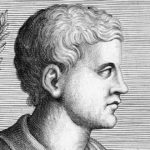Author- Michael de Molinos
Publisher-The Library of Spiritual Classics.
Here is a little gem of spiritual writing. It was a book fatal to its author who lived in the 17th century. Molinos was a Spanish priest who moved to Italy for unknown reasons. It seems likely that he suffered death at the hands of the Jesuit inquisition because of this little book. At first the doctrine set forth in the guide was accepted and even commended by the Roman Catholic hierarchy. However, as its popularity increased and many attended more to the states of their inward heart before God instead of adhering so strenuously to the outer ordinances of the church, Molinos fell out of favor and was imprisoned. After his death more than twenty thousand letters were found in his house which had been written in positive response to his guide thus testifying to its effect in the church of his day. On the whole the Spanish mystical writers set little store by the doctrine of the virgin Mary, instead they based their teaching on the Person and work of Christ alone. The guide is not a book to read so much as one to dip into, considering its contents little by little. It must be borne in mind that this is a book of mystical devotion in which the author is promoting a way of enjoying union with God through the Lord Jesus Christ. He is at pains to root all his teaching in the work of the Lord Jesus, the shedding of His blood and that the soul be ‘clothed in the treasures obtained by His passion’. Part of his emphasis lies in his belief that the soul may attain to spiritual communion with God even in the midst of the most pressing activities of life. He does not encourage a life of withdrawal from the world. Molinos points away from ceremonial observances of the church to Him who is the Way and the Truth and the Life and if Jesus be followed the soul may fearlessly go forward. He dismisses visions, ecstasies and raptures as unnecessary and his teaching has a thoroughly commonsense component which is also linked with encouragement to simplicity of life in this present evil world. He was clearly a man of his time and background and this comes through in language and concepts. The term used to describe him could be that he was a ‘quietist’. Quietism has obvious danger of a passivity which lays the soul open to deceiving spirits but perhaps some of the emphases of this guide will be helpful in redressing the imbalance in the lives of many who are too busy with activity laborious and unsatisfying and will nourish up an inward stillness in which we can hear the voice of God Who only speaks the Word of Life.




